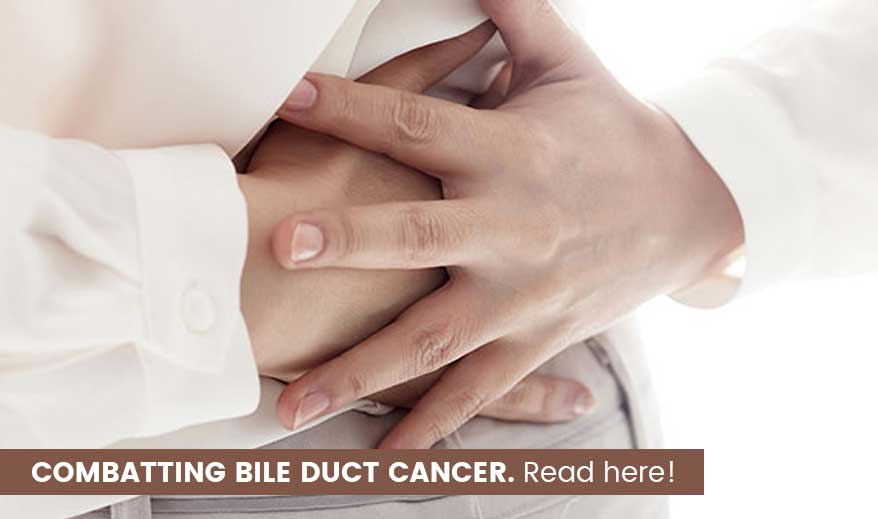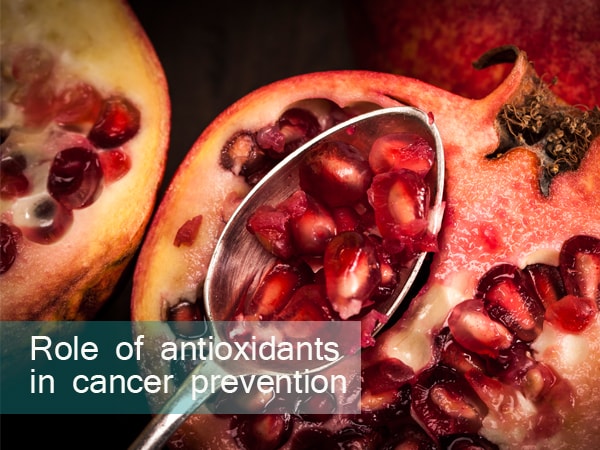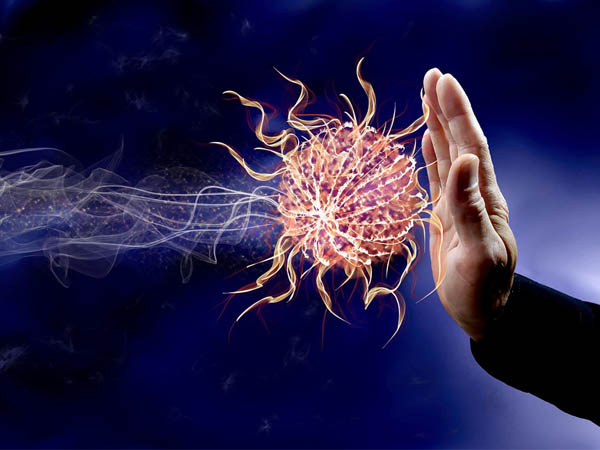
Posted in: Cancer by Dr. Tarang Krishna Posted Date: 03 Sep, 2020
Cholangiocarcinoma is a form of cancer that develops in the bile ducts. This bile duct is responsible for carrying the bile fluid, and it connects the liver to the gallbladder and the small intestine.
Cholangiocarcinoma is also known as bile duct cancer. This cancer is an uncommon condition that can be found in people after the age of 50. But it can also occur at an early age.
What Are The Different Types Of Cholangiocarcinoma?
Cholangiocarcinoma can be classified into three types based on the location of their development in the bile duct.
Intrahepatic Cholangiocarcinoma
The intrahepatic cholangiocarcinoma occurs within the liver and in parts of the bile duct. This type is also classified as liver cancer.
Hilar Cholangiocarcinoma
The hilar cholangiocarcinoma occurs outside the liver and is also known as the perihilar cholangiocarcinoma or extrahepatic carcinoma.
Distal Cholangiocarcinoma
Distal bile duct cancer is the condition in which cancer growth occurs nearest to the small intestine.
Cholangiocarcinoma can also be classified based on the type of cell division. Only under proper lab tests can doctors find out about the cancer cell types and their appearance. Most of the biliary carcinoma are adenocarcinomas that start in the lining of the granular cells inside the bile duct. Few more types of cholangiocarcinomas are lymphomas and sarcomas. These types rarely develop.
What Are The Common Signs And Symptoms Of Cholangiocarcinoma?
The primary symptoms that one can notice are:
- Jaundice, as yellowish skin colour and eyes.
- Itchy skin.
- Discoloured stool.
- Fatigue.
- Significant weight loss.
- Abdominal pain.
- Loss of appetite.
Causes of Cholangiocarcinoma
It is not always clear the reason for cholangiocarcinoma development. Researchers tell that this occurs when the cells of the bile duct start to mutate. The DNA mutations cause a change in the functions, and it results in the uncontrolled growth of cancerous cells. But no clear evidence has been able to prove yet why DNA mutations occur.
Diagnosis Required For Cholangiocarcinoma
There are various stages of diagnosis, and these are categorized as lab tests, image testings and endoscopic procedures.
Lab tests are as follows:
- Blood tests for checking the liver function, infection, or presence of tumour are done. The two blood tests for liver functions are CEA and CA19-9. These tests confirm if there are any underlying gastrointestinal malignancies, including bile cancer.
- The tumour marker tests are also done to get additional clues for any signs of tumour development that may result in bile inflammation and infections.
Endoscopic Tests
These set of tests include:
- Gastrointestinal endoscopy is done to get a better view of the liver and bile duct. The doctor administers a pain medication if necessary before the test. The endoscope is then inserted through the patient's mouth into the oesophagus and downwards to send images to a monitor.
- Cholangioscopy is a type of test done, especially for people who are suspected of cholangiocarcinoma. In this test, the doctor inserts the endoscope inside the bile duct for better images and biopsy samples if needed.
- Endoscopic retrograde cholangiopancreatography is another test that uses a particular side-viewing instrument. This instrument helps the doctor to get x-ray pictures of the bile duct. During this test, the doctor may take a biopsy sample for further analysis.
- Endoscopic Ultrasound is the combination test of both Ultrasound and endoscopy. It helps diagnose any bile disorder, including bile cancer.
Imaging Tests
Imaging tests or scans are non-invasive, and the images are obtained to analyze the patient's internal conditions. The scans are:
- CT scan is done for the detection of any masses associated with the bile duct of the patient.
- MRI is another robust diagnosis that uses magnetic waves to get a detailed image of the bile duct and adjoining areas. The advanced MRI for cholangiocarcinoma is a particular test done only for bile cancer patients.
Cholangiocarcinoma Treatments
For every type of bile duct cancer, early detection and diagnosis can lead to successful cholangiocarcinoma treatments. At Cancer Healer Center, experienced and recognized cancer specialists treat bile cancer patients, offering the latest treatment options for better results. It works on principle IMMUNOTHERAPY. Immunotherapy is an option to patients which is holistic and pain-free. Oral medicines are given to enhance the Immune system, which helps the body in fighting the disease by stimulating the growth of normal cells. We have a dedicated team of oncologists for cholangiocarcinoma patients, promising precise treatments and fast recovery. The other best-known treatments for bile duct cancer include:
Surgery
After the detection of cholangiocarcinoma, the doctor will try to remove the cancer cells as much as possible. In cases with early detection of the disease, surgery is the best solution that removes the cancer parts successfully from the bile duct, liver tissues, pancreas or lymph nodes.
Liver Transplant
People with hilar cholangiocarcinoma may require a liver transplant. In this process, the patient's liver is replaced with a donor's liver. But cancer may occur again after the treatment. In case of recurrence of cancer, the doctor will suggest other forms of cancer treatments.
Chemotherapy
With the use of certain drugs that destroy cancer cells, this therapy is done. Chemotherapy is the treatment option for bile cancer when surgery cannot be done or when the cancer cells remain after the surgery. Patients with advanced cholangiocarcinoma are suggested chemotherapy.
Radiation Therapy
Radiation therapy uses high energy rays to destroy cancer growth. This process directs radiation beams to the exact location of the cancer growth. In this treatment, the doctor may place the radioactive material inside your body near the bile cancer site to destroy the cancer cells.
Biliary Drainage
This process involves the restoration of the flow of bile. Bypass surgery is done to reroute the bile around cancer. Biliary drainage may help in stopping the symptoms of cholangiocarcinoma.
How to prevent cholangiocarcinoma?
Your doctor may suggest some of the healthy lifestyle choices that will keep you away from bile duct or bowel duct cancer.
This disease cannot be prevented, but one may reduce the risk by adopting a few necessary measures, such as:
Taking the Hepatitis Vaccine
Getting vaccinated on the hepatitis virus may reduce the risk of liver and bile related disorders. Your doctor may suggest taking the hepatitis virus vaccine to keep your liver safe from such infections in the future.
Quit Smoking
Smoking is seriously linked with cholangiocarcinoma. One must try to stop smoking to reduce the risk of bile cancer. In case you need help, make sure you talk to a health advisor or counsellor about your smoking habit.
Take Liver Care
You must take all the necessary steps to keep your liver in good condition. A proper diet including plant-based protein, fish and limited dairy and poultry products are healthy for your bile and liver. Apart from that, one must not consume alcohol too much. Drinking in moderation should be followed.
What The Risk Factors For Cholangiocarcinoma?
- Primary sclerosing cholangitis - In this condition, the bile ducts hardens and is scarred. It may increase the risk of bile duct cancer.
- Chronic liver disease - Scarring of liver from constant liver ailments and diseases may turn into cancer.
- Bile duct defect at the time of birth - This is a problem that people are born with and needs to be treated to avoid the future risk of bile duct issues.
- The presence of liver parasites also increases the risk of cholangiocarcinoma. It occurs when raw or uncooked food is eaten. Make sure you eat only adequately cooked meals, especially meat and fish, need to be cooked properly.
- Aged people above 50 are prone to cholangiocarcinoma. Thus people who are above 50 must go for liver check-up once a year.
- Smoking is a habit that increases the risk of various liver and bile related diseases, including cholangiocarcinoma.
- People who suffer from acid reflux and have GERD should treat the problem with the right food habits and medications. The reflux of acid may lead to liver and bile diseases.
- People with cirrhosis are at higher risk of getting cholangiocarcinoma.
When Should You Seek Doctor's Advice?
You must see a doctor in case you see persistent weight loss and fatigue or other symptoms. The general physician may refer you to a gastro-specialist if required. And a gastro-specialist can find out if there are any signs of liver disease or bowel duct cancer.
To know more about cholangiocarcinoma get in touch with Cancer Healer Center.







_1552549280.jpeg)